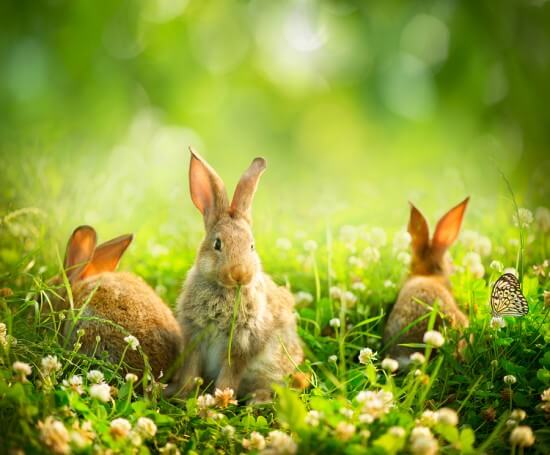
Like Christmas and other holidays, Easter is full of a number of different traditions. Easter is derived from a blend of Christian and Pagan symbols and beliefs. The word ‘Easter’ comes from Eostre, an Anglo-Saxon goddess and a symbol of the rebirth of spring. Easter is also associated with the rebirth of Christ in many religions.
Easter Eggs
Easter, associated with birth, in part because most animals give birth in spring, is also when many people celebrate the rebirth of Christ. Eggs are Easter symbols that have been around for many years as they also are associated with rebirth, the rebirth of man in particular. The colored Easter egg tradition stems from the Polish folktale that claims the Virgin Mary offered eggs to the soldiers at the cross where they crucified Jesus, as a plea to save her son. As she cried, her tears fell on the eggs leaving them multicolored. There are some who believe the Easter egg is a symbol of the rock that blocked the tomb of Jesus Christ. In Egyptian culture the egg was actually hung from the ceiling in Egyptian temples. When the eggs were dyed, they were actually considered sacred offerings and they represented birth, terrestrial and celestial.
Easter Bunny
Where did the Easter bunny come from? The bunny, like many other animals, is born in the spring and it’s one of the symbols of fertility. This adorable white bunny that delivers eggs to children dates back to a German book from 1682 that tells a story of a white rabbit that would lay eggs and hide them in the garden for children to find. In the 1800s, the Germans started to create Easter bunnies out of sugar and pastry. Aside from being a symbol of fertility in ancient Egypt, the Easter bunny is not linked to any religious symbols and it does not have any religious significance.
Easter Bonnet
The Easter bonnet is a symbol of the spring and goes hand-in-hand with the ages old tradition of wearing new clothes at Easter. During the Great Depression, a new or refreshed Easter bonnet was considered a luxury. The early 1900s brought in a wave of Easter bonnets as mothers and grandmothers would make them and stroll to church to show off their new Easter bonnets.
Easter Basket
Another fun Easter tradition is the Easter basket. Children use Easter baskets filled with fake grass in them to collect Easter eggs that have been left for them by the Easter bunny. The Easter basket dates back to Catholic traditions of filling a basket with bread, ham, cheese and other foods that were served as Easter dinner. These foods were taken in the Easter basket to mass in order to be blessed for Sunday dinner.
Today, the Easter basket, left by the Easter bunny, is filled with candies, chocolate, toys and other gifts.
Easter lily
The Easter lily dates back to ancient Rome where the goddess Flora was in charge of making the flowers bloom. The Festival of Floralia was held each year in the spring as a way to honor the goddess. The Easter lily is used as a symbol of purity of Christ and was brought to the United States in 1882 from Bermuda.
Easter Palm
Have you ever wondered how Palm Sunday got it’s name? The palm dates back to a Roman custom where royalty was welcomed by people waving palm branches. When Jesus Christ arrived in Jerusalem on the first Palm Sunday, he was welcomed with palm branches, as the people believed he was there to save them. Many times garlands and Christian crosses are made from palm frons.
